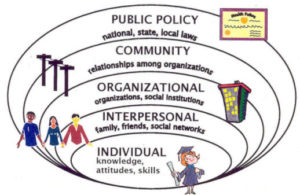In previous chapters, we encountered how young people live their lives merged with social media and which are the posing risks of this kind of a lifestyle. We presented cyberbullying and recommendation for lessening its effects in the school environment.
In the project Joining Forces to Combat Cyberbullying in Schools, we tested different approaches of to tackling cyberbullying and compared them with conclusions and researches of previously implemented projects. Based on our conclusions we believe that we can only stop cyberbullying with a holistic approach that entitles:
- raising problem awareness of cyberbullying,
- promotion of safer behaviours and changing the attitude of all involved parties towards cyberbullying,
- minimising risks in specific groups of young people,
- trainings for school staff and
- interventions in specific cases of cyberbullying.
This approach addresses three target groups whose behaviour affects at most the occurrence of cyberbullying in the school environment:
- pupils,
- school staff and
- parents.
This chapter represents the core of this publication. Interlinking knowledge about cyberbullying, youth and social networks (more detailed presentations can be found in previous chapters) with concrete measures and guidelines for implementation (which are presented in next chapters).
